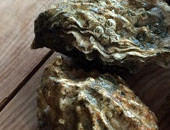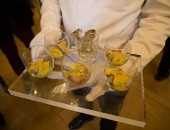The impact of new media on the proliferation and quality of information available to the consumer and the correlative consequences on revenue models for publishers.
Journalism (print media) is undergoing a revolution. The fundamental changes now taking place will completely alter the industry and its practices. It is possible that newspapers, magazines and radio no longer will be sold on the basis of the identity and goodwill of the publisher or publication alone. This deconstruction had already started several years ago as radio, through the medium of podcasts, divided programming into individual elements available for download which was made possible through the invention of iTunes as their publishing platform.
As with most media, the requirement for a new publishing strategy and editorial positioning was borne out of the means of its production and distribution. The mission statement of a publication may now be worth less than the objectives of a specific article or story and its appeal and perceived value to an audience. For newspapers and magazines ‘Pay-per-view’ seems set to change how the industry earns its living and will fundamentally alter the way journalists write. For material to be published it will need to fulfill certain criteria and become cost effective as determined by the quantity of paid downloads. This means that consumers will gain ground in their judgement over editorial integrity at the expense of the editor – because, for example, the ‘branded’ contributions will compete with the views of bloggers, who are sometimes just as well informed . For a publisher this poses a number of problems, not least of which is retaining control over the product (articles) being sold. However, there is also another complicating element which is the perpetual search by consumers for information, products, downloads, websites etc which are customarily free. The more competition there is from free sources of information, which are nonetheless perceived by internet users to have a value, the more difficult it may be to sell similar items. The genuine article is undoubtedly a selling point (its USP): a customer will pay for a Michael Jackson track but not a track recorded by a Michael Jackson sound-alike. By the same token Microsoft persuades clients to purchase its ‘Office’ software when there is a perfectly good alternative available which costs nothing (OpenOffice developed by Sun MicroSystems). However, it is becoming more difficult for consumers to distinguish between all the different sources of information as to their validity and worth. With so many free sources available, the ‘free’ competition may overwhelm publishers who will be unable to earn the revenues they need to survive.
The wine industry is diverse – a bottle produced by a notable Burgundian may sell for thousands of pounds whilst a highly rated Californian Cab may cost just $30. Despite its appearance as an artisan product it is nonetheless a global industry with billion dollar revenues. The US company Constellation Brands alone made sales of over $3.5 billion in the fiscal year 2009. At least one major UK wine company with wine interests is quoted in the FTSE100 (Diageo). Several major investors in wine are part of the CAC40 on the Paris Bourse: Pernod Ricard, LVMH (who own Château d’Yquem), AXA, Bouygues (a personal investment by Martin Bouygues and his brother who own Château Montrose, Bordeaux), and Crédit Agricole.
The world of wine is an excellent industry when it comes to studying the impact of new media. It is easily defined, there is a wide range of data available, and the wine industry generally makes use of all media to promote their products from print to digital. It is an area in which there is significant competition of the kind already highlighted.
Some questions one might try and answer include:
1. Has the overall quality of reporting on wine improved or declined since new media became available?
2. Is the new competition to traditional paid sources of information a positive or negative factor?
3. Have more consumers been turned into wine enthusiasts as a result of the proliferation of consumer led opinion?
4. Has wine appreciation increased?
5. What particular areas have driven the information provision for consumers? (e.g. Forums, blogs, micro blogging, multimedia, social networking etc)
6. What impact has the diverse information published had on marketing and advertising budgets?
7. What is the influence of amateur ‘journalists/commentators’ through the blogging platform as opposed to professional advice?
8. Have marketing agencies/pr companies made cost savings by using the informal network, and if so, how much, and how do they anticipate using them in the future?
9. How can a publisher driven by trying to generate editorial facing revenues distinguish itself from free outlets of information?
10. Will general publishers who can drive content to their websites (and thus traffic) increasingly compete with specialist publishers?
11. How do/will go-it-alone publisher/journalists disrupt the market?
12. In an age where the use of the internet to purchase online grows at an exponential rate what is the future for print advertising?











In simple terms, despite frequent assertions by the wine fraternity that « people are interested in wine », there is little evidence to support this. Surveys of newspaper readers and sales of wine books and magazines collectively reflect a shallow level of curiosity. People who drink wine do appreciate a few tips on what to buy, but they really aren’t asking for background information about where it’s from, how it’s made and the man or woman who made it. Historically, though, whether they wanted it or not, casual drinkers were occasionally exposed to wine writing as they browsed general newspapers and magazines. Today, with the move online, the chances are increasingly that wine writing – professional or amateur will be a destination. There wqill be – even – fewer readers, but the people who do read will be keener than ever. And, I reckon that these keen self-educators – the men and women who become the go-to information resource in families, communities or workplaces – will be the people who will increasingly drive the wine world of tomorrow.